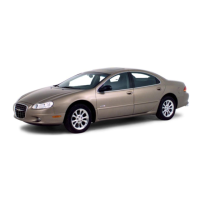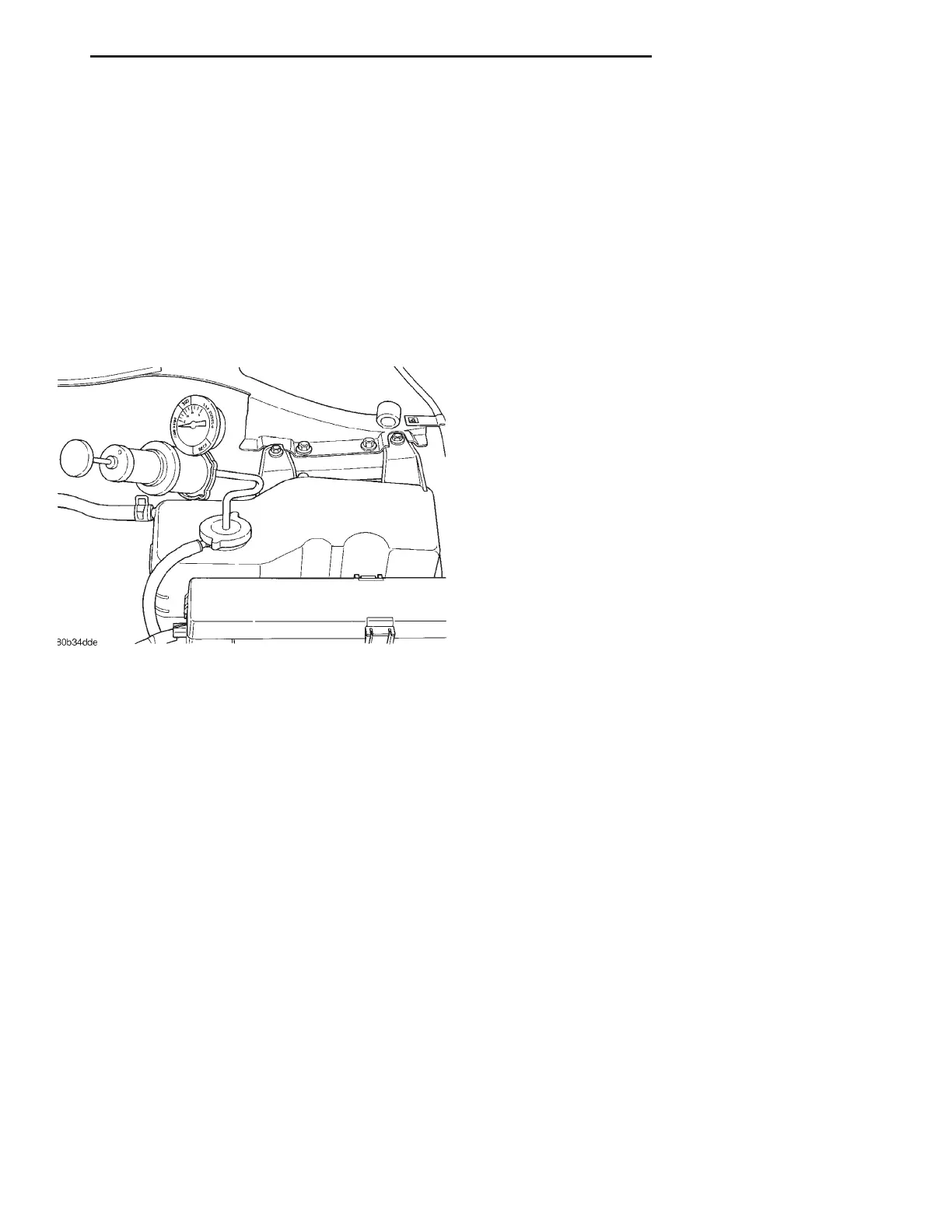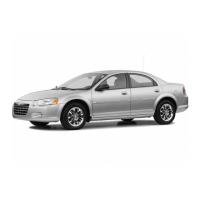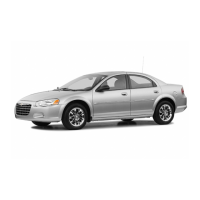TESTING SYSTEM FOR LEAKS
With engine not running, wipe the coolant bottle
neck sealing seat clean.
Attach a radiator pressure tester to the coolant
bottle, as shown in (Fig. 18) and apply 104 kPa (15
psi) pressure. If the pressure drops more than 2 psi
in 2 minutes inspect all points for external leaks.
All hoses, radiator and heater, should be moved
while at 15 psi since some leaks occur while driving
due to engine rock, etc. If the cooling system will not
pressurize easily and there is no coolant leaks, the
cooling system is only partially filled. Refer to filling
procedure in this section.
If there are no external leaks after the gauge dial
shows a drop in pressure, detach the tester. Start
engine and run the engine to normal operating tem-
perature in order to open the thermostat and allow
the coolant to expand. Reattach the tester. If the nee-
dle on the dial fluctuates it indicates a combustion
leak, usually a head gasket leak.
WARNING: WITH TOOL IN PLACE PRESSURE
BUILDS UP FAST. ANY EXCESSIVE AMOUNT OF
PRESSURE BUILT UP BY CONTINUOUS ENGINE
OPERATION MUST BE RELEASED TO A SAFE
PRESSURE POINT. NEVER PERMIT PRESSURE TO
EXCEED 138 kPa (20 psi).
If the needle on the dial does not fluctuate, race
the engine a few times. If an abnormal amount of
coolant or steam is emitted from the tail pipe, it may
indicate a faulty head gasket, cracked engine block or
cylinder head.
There may be internal leaks which can be deter-
mined by removing the oil dipstick. If water globules
appear intermixed with the oil it will indicate a
internal leak in the engine. If there is an internal
leak, the engine must be disassembled for repair.
LOW COOLANT LEVEL
Low coolant level in a cross flow radiator will
equalize in both tanks with engine off. With engine
at running and at operating temperature, the high
pressure inlet tank runs full and the low pressure
outlet tank drops. If this level drops below the top of
the transmission oil cooler, air will be drawn into the
water pump:
• Transmission oil will become hotter.
• High reading shown on the temperature gauge.
• Air in the coolant will also cause loss of flow
through the heater core.
• Water pump seal may run dry, increasing the
risk of premature seal failure.
• Exhaust gas leaks into the coolant can also
cause the same problems.
DEAERATION
As air is removed from the cooling system, it gath-
ers in the coolant bottle. This pressure is released
into the atmosphere through the pressure valve
located in the pressure cap when pressure reaches 96
- 124 kPa (14 - 18 psi). This air is replaced with cool-
ant from the coolant bottle.
NOTE: Deaeration does not occur at engine idle—
higher engine speeds are required. Normal driving
will deaerate cooling system.
Fig. 18 Pressure Testing Cooling System
LH COOLING SYSTEM 7 - 17
DIAGNOSIS AND TESTING (Continued)

